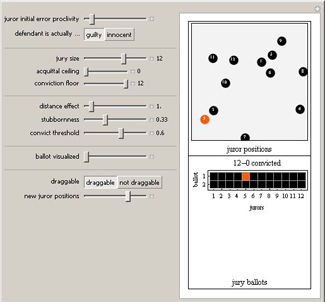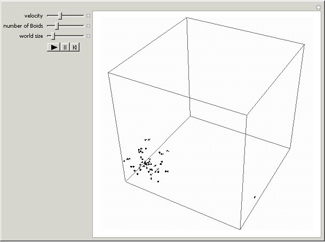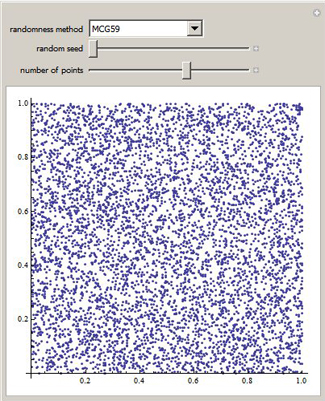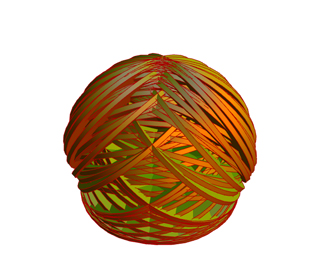Charlie reaches into the glass, pulls out a fist full of gel-
like spheres completely hidden in the water.
CHARLIE (cont'd)
Hydrophilic spheres. They start off
as hard crystals, but drop them in
water and they expand 300 times
their size. Since the sphere
crystals are mostly water --
He drops them back in the cup, they disappear again.
CHARLIE (cont'd)
They become invisible when
submerged due to an identical index
of refraction with the liquid.

A light beam is produced by a source submerged in an aqueous solution of refractive index n. This Demonstration
shows how the light source appears for different beam directions, divergences, and indices of refraction. The same
effect causes a stick obliquely submerged in water to appear bent.
CLOSE ON A LAPTOP SCREEN -- an ANIMATED MODEL of 12 numbered
balls; it resembles the POWERBALL LOTTERY.
Charlie works "jury" math on a board. ALAN enters --
ALAN
(re: the model)
Hope you'll share the jackpot.
CHARLIE
I'm not predicting the lottery. And
for the last time -- I can't.
ALAN
(kidding)
Can't... or won't?
CHARLIE
It's a Spatial Dynamic Jury
Model... a statistical model of
jury behavior.
ALAN
Was it developed by twelve angry
mathematicians?

In this spatial and dynamic model of jury behavior, jurors initially vote to convict or acquit the defendant based on a
random variable drawn from a distribution affected by: (1) the defendant's actual guilt or innocence, and (2) the
location of each juror in a two-dimensional conceptual space that represents the juror's ability to accurately perceive
the situation as well as his or her predilection towards conviction. On subsequent ballots (the second stage), the
jurors revise their votes based on the weighted votes of the other jurors. The weights for each juror are determined by
a distance measure between that juror and the other jurors and a "stubbornness factor" that gives a special weight to
the juror's own prior vote. The balloting continues until a fixed point is reached or until ten ballots have been taken,
at which point the jury is assumed to have reached exhaustion.
CHARLIE
Which, by definition, presupposes
statistical analysis. It comes
down to group dynamics. Kinda like -
- herding cattle.
ENTER AUDIENCE VISION:
Charlie walks across a western landscape.
CHARLIE (cont'd)
In the Old West, you'd have maybe
10 cowboys to drive thousands of
cattle.
BEYOND Charlie, a massive herd of CATTLE on the move.
CHARLIE (cont'd)
Instead of trying to control an
entire herd, they'd pick a lead
steer. They'd well, steer him...

The Boid model is a famous multi-agent model that was invented by Craig Reynolds. Each Boid is an agent following three
simple rules: (1) Align with other neighbors; (2) Try to be close to neighbors; (3) Avoid collision with other
neighbors. These rules can make the flock of Boids reproduce the behaviors of real bird flocks or fish schools. Push the
Play button to trigger the simulation, and adjust the number of Boids, the size of the world and other parameters by
using the sliders, then enjoy yourself.
CHARLIE
I ran an asymptotic analysis of the
program's Mersenne Twister
algorithm -- the system used to
pick jurors out of the county pool.
(explains)
Broke it down to see if it's
working properly.
DON
It wasn't?
CHARLIE
No, when Hooper hacked the
software, he planted Cerf into the
system.

The
Mathematica function
SeedRandom comes with a variety of different methods. There are two basic types, often identifiable by sight.
The pseudorandom methods (such as the Mersenne Twister) seem random, while the quasirandom methods (such as Sobol) seem
to have a pattern, with less clustering.







